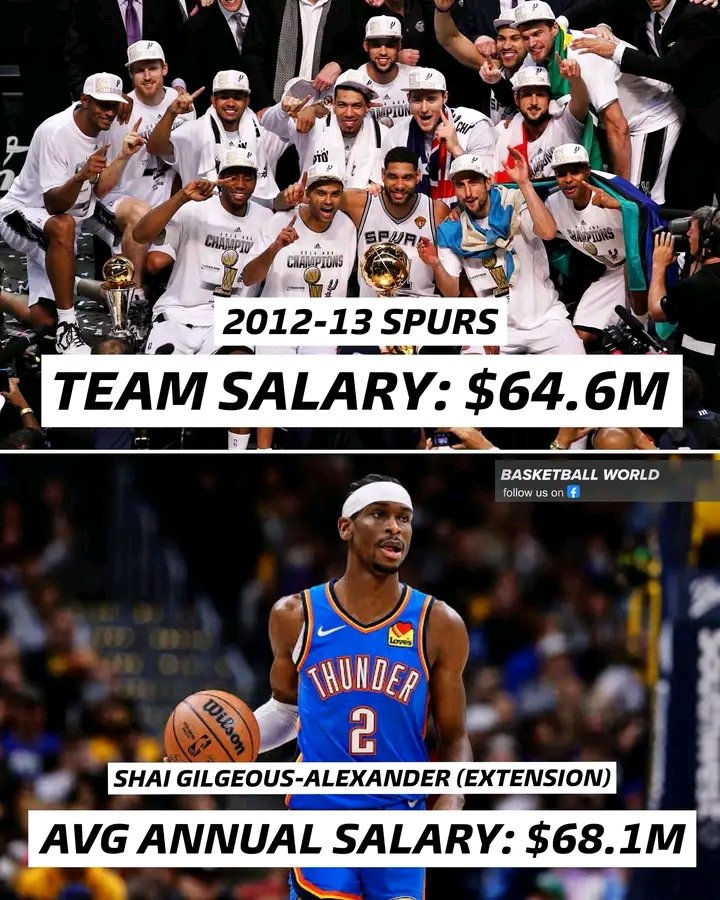The transformation of NBA salaries over the past decade is nothing short of mind-blowing. Take a look back at the 2013-14 season, when the San Antonio Spurs captured the NBA championship. That entire championship roster—composed of legendary names like Tim Duncan, Tony Parker, Manu Ginóbili, and Kawhi Leonard—earned a combined total of just $64.6 million for the e
ntire year. Now, in a stunning contrast, Shai Gilgeous-Alexander, a single player, is set to earn $68.1 million in a single season. That means one player’s salary today can outpace the entire championship team’s combined earnings from nearly a decade ago.
This staggering difference highlights the incredible evolution of the NBA’s financial ecosystem. The league’s revenue has skyrocketed, fueled by massive TV contracts, global market expansion, digital streaming deals, and growing international fan bases. In 2013, the NBA’s television rights were already lucrative, but the current deals dwarf those earlier agreements. For example, the latest TV rights deal signed in 2023 is worth an astonishing $75 billion over nine years—this kind of windfall trickles down directly to player salaries, pushing the salary cap higher year after year.
The salary cap, which essentially dictates how much teams can spend on player salaries, has ballooned from around $58 million in 2013 to nearly $135 million today. This rise in the salary cap gives teams more room to offer enormous contracts to their star players. It’s not just about Shai Gilgeous-Alexander either—many superstars like Giannis Antetokounmpo, Luka Dončić, and Kevin Durant are signing deals worth over $50 million annually. The top tier of NBA talent is earning more money than ever before, making professional basketball one of the most lucrative careers in sports.
What’s shocking is how quickly the money has escalated. In the early 2000s, a $10 million annual salary was considered astronomical. Now, players like Gilgeous-Alexander are earning nearly seven times that amount per year. This massive financial growth also affects how teams build their rosters. In the past, championship teams were often built with balanced lineups and deep benches of role players earning modest salaries. Today, teams are often constructed around a few superstars with massive contracts, while managing the rest of the roster under the constraints of the salary cap.
Another factor behind the surge in salaries is the increasing global popularity of the NBA. The league has become a worldwide phenomenon, with fanbases spanning continents. This global reach drives merchandise sales, international broadcasting rights, and lucrative sponsorship deals. Brands are eager to align with NBA stars, boosting player endorsements and overall income far beyond their salaries.
However, this rapid rise in salary figures also raises questions about the long-term sustainability of these deals and their impact on competitive balance. Will the gap between superstar earnings and role players continue to widen? How will smaller market teams compete financially in this environment? These are ongoing debates within the league.
In summary, the leap from the entire 2013-14 Spurs roster making $64.6 million to a single player like Shai Gilgeous-Alexander earning $68.1 million today is a clear marker of how radically the NBA’s economic landscape has shifted. The league has entered a new era of astronomical contracts and unprecedented financial growth. For fans and players alike, it’s a wild time to witness the power—and price—of basketball stardom.

